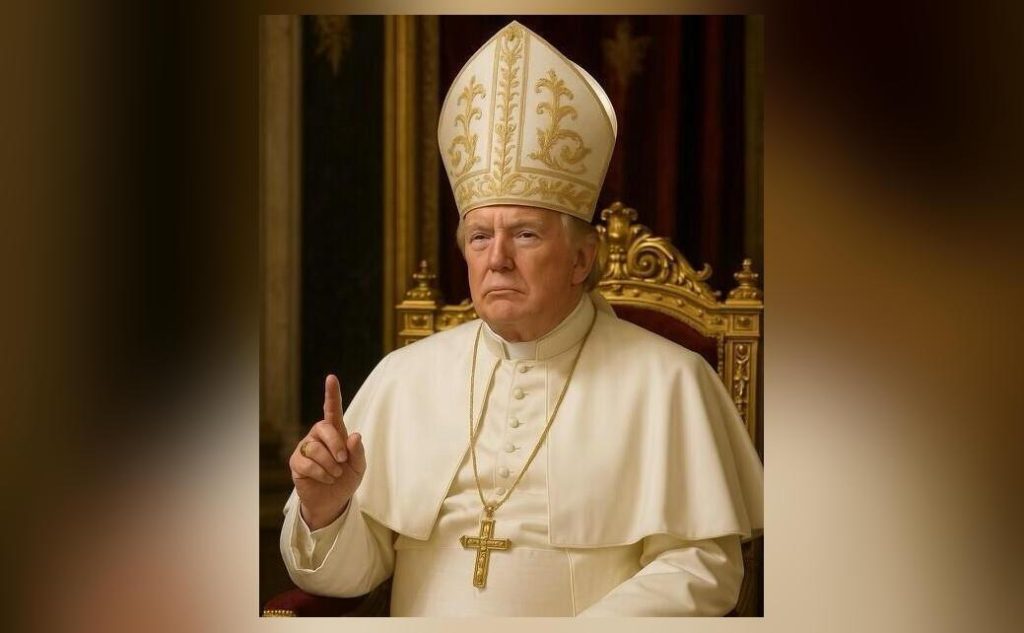
White House Responds After Trump’s Post Showing Himself as Pope Criticised
In a recent social media post, US President Donald Trump sparked outrage and criticism after he shared an AI-generated image of himself as the Pope. The image, which was created using artificial intelligence, showed Trump donning the traditional papal attire, complete with a mitre and a rosary.
The post was shared on Trump’s official Twitter account, and it quickly generated a significant amount of attention online. However, not all of the attention was positive. The New York State Catholic Conference, a prominent Catholic organization, was quick to condemn the post, accusing Trump of mocking the faith.
“We are shocked and saddened by President Trump’s decision to use an AI-generated image of himself as the Pope,” said a spokesperson for the organization. “This is not only a disrespect to the Pope and the Catholic Church, but it is also a mockery of the faith itself. We urge President Trump to refrain from using such images in the future and to show greater respect for the religious beliefs of others.”
In response to the backlash, the White House issued a statement defending Trump’s actions. “President Trump flew to Italy to pay his respects to Pope Francis,” the statement read. “He has been a staunch champion for Catholics and religious liberty, and this post was simply a way for him to show his appreciation for the Pope and the Catholic Church.”
The White House statement also pointed out that Trump has a long history of supporting Catholic causes and has worked to advance the interests of the Catholic Church. “President Trump has been a strong supporter of the Catholic Church and has worked to advance the interests of Catholics and other religious communities,” the statement said. “This post was simply a way for him to show his appreciation for the Pope and the Catholic Church, and to demonstrate his commitment to promoting religious liberty and tolerance.”
Despite the White House’s defense of the post, many people continue to criticize Trump for his actions. “This is not the first time that President Trump has used an AI-generated image to try to make himself look more like a religious leader,” said a spokesperson for the Human Rights Campaign, a prominent LGBTQ+ advocacy group. “It’s a tactic that is both absurd and offensive, and it’s a clear attempt to pander to his Christian base.”
The controversy surrounding Trump’s post has also raised questions about the use of AI-generated images in politics. “The use of AI-generated images in politics is a growing trend, and it’s one that raises significant ethical concerns,” said Dr. Sarah Jones, a professor of political science at the University of California, Berkeley. “These images can be used to deceive and manipulate the public, and they can undermine the integrity of political discourse. We need to be careful to ensure that these images are used responsibly and with transparency.”
In conclusion, the controversy surrounding Trump’s post showing himself as the Pope is a clear example of the challenges that politicians face when it comes to using social media. While Trump’s actions may have been intended to be humorous or lighthearted, they have instead sparked outrage and criticism. As we move forward, it’s essential that politicians use social media responsibly and with sensitivity, and that they prioritize transparency and authenticity in their online communications.



